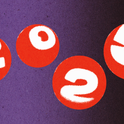The other day, one of my psychotherapy patients with all kinds of food problems told me about a meal she had cooked for her boyfriend. “For pudding I made fried doughnuts with whipped cream, maple syrup and a box of Milk Tray on top.” She must have noticed my eyebrow going up because she explained. “A melted box of Milk Tray.” I had a graphic image of this in my mind and felt queasy for the rest of the session. She had melted a whole box of Milk Tray.
When I told my colleagues about this during supervision, the group was suitably shocked. “What?!” someone cried. “That is really disgusting. How do you melt a whole box of chocolates?” “Well, I suppose you just put them in a pan,” someone suggested. “Or a bain marie?” someone else chipped in. We were quiet for a while, digesting, or rather, failing to digest the full horror of the reported dessert. (NB: therapists and analysts themselves are rarely fat or thin.)
I once had a conversation with an eminent psychoanalyst about how to listen to difficult material. He described a patient of his who brought endless pain into the sessions— rape, torture, imprisonment, persecution. The analyst was deeply disturbed, and, at the same time, felt unworthy of listening, coming as he does from a fairly ordinary middle- class background. His own elderly supervisor had analysed Holocaust survivors and her advice was to “treat the material as you would a dream. Always ask yourself: what is the unconscious communication?” Although he knew perfectly well that the job of a psychotherapist is to look for the affect—don’t get lost in the content—he needed reminding when confronted with such grim stories.
My Milk Tray patient was abused in childhood. A lot of the time this is completely absent from the sessions (and so, she hopes, from both our minds). If I relate an adult symptom to the child abuse she will say that 12 isn’t really a child and, anyway, perhaps she was 13 or 14, as though making herself older in memory will mean the abuse didn’t happen.
At other times it is present and she tells me things that make me want to cry. Her posture changes and she sits like a little girl, toes facing inwards. It is all I can do to bear it. Apparently, if we, the listener, can bear it, then the patient might feel it is bearable too. Might.
But what is so interesting about the Milk Tray incident is that the group and I got wound up. We are constantly listening to each other’s patient reports (a detailed account of our most recent session as closely as we can remember it)—gruesome suicide attempts, details of self-harm, accounts of violent childhoods and sexual assault. It can be seriously harrowing. I was once in a supervision group where someone walked out and another put her head out of the window for air, so disturbing was the material.
Still, it’s not often that someone will actually say: “That’s disgusting.” The level of revulsion at the Milk Tray seemed disproportionately high, everyone relieved to lapse into gallows humour.
But often, behind such seemingly banal stories as this one, there is a real horror. Treat the material as you would a dream, I thought. How is she making you feel? Perhaps she is trying to force something grotesque into her boyfriend or into me, as grotesque things were forced into her, disguised as love? “Maybe she wants you to know that she does shocking things, but can’t let herself, let alone you, really digest what they are,” someone offered.
The stories patients tell are not all of horror and grief. They are often as sickly sweet as Milk Tray, and the real horror is underneath.
Life of the mind: Beneath the surface
March 27, 2014












